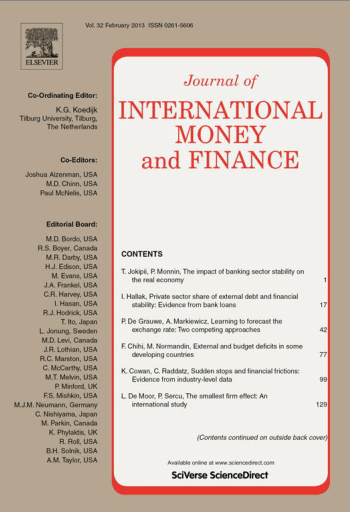Which sectors go on when there is a sudden stop? An empirical analysis
István Kónya, Miklós Váry
Highlights
Sudden stops are identified as big drops in capital inflows, followed by recessions.
There is a reallocation from non-tradable to tradable production after sudden stops.
Most sectors overheat before sudden stops, but a strong correction follows.
Sectors that are hit harder in a sudden stop rebound faster.
The real exchange rate is an important channel of adjustment during sudden stops.
Abstract
This paper analyzes the dynamics of sectoral Real Gross Value Added (RGVA) around sudden stops in foreign capital inflows. We identify sudden stop episodes statistically from changes in gross capital inflows from the financial account. In the baseline specification, we estimate changes in the growth rate of sectoral RGVA during sudden stops and in the few quarters preceding and following them. We also look at whether real exchange rate movements and the depth of the RGVA decline on impact explain different sectoral dynamics afterwards. In an additional exercise, we analyze deviations from the sectors’ long-run growth path. Our findings indicate that: (i) the construction sector experiences the largest drop in its growth rate during sudden stops; (ii) generally, tradable sectors, especially manufacturing, face larger damages during sudden stops than nontradable sectors, but they decelerate less in the medium run than some service sectors; (iii) the depth of the initial slowdown is related to a more favorable subsequent performance (a rebound effect), while we find only very weak evidence that real exchange rate depreciations facilitate adjustment. Overall, our results suggest a prolonged reallocation of economic activity away from service sectors, towards the production of goods. This is consistent with a traditional view of the role of tradable and nontradable sectors in a sudden stop episode.


